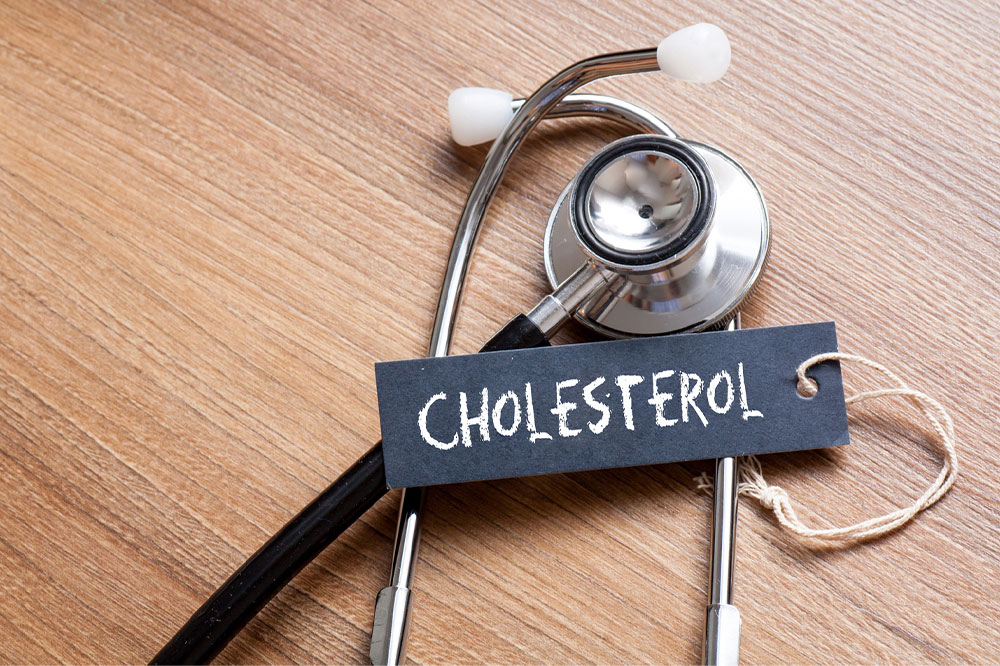5 early signs of increasing cholesterol levels

The impact of high cholesterol on cardiovascular health cannot be underestimated. As an invisible threat, it often goes unnoticed until complications arise. However, with early detection and intervention, individuals can manage their cholesterol levels, mitigate potential risks, and adopt lifestyle changes that promote heart health and overall well-being. Here are the early signs that may indicate rising cholesterol levels, enabling individuals to take proactive steps to maintain a healthy lipid profile.
Good vs. bad cholesterol
The distinction between good and bad cholesterol lies in their respective functions and effects on the cardiovascular system. HDL or good cholesterol helps the body to remove excess cholesterol from the bloodstream. This extra cholesterol is transported to the liver for disposal and plays a major role in lowering the risk of developing cardiovascular diseases. On the other hand, LDL is considered bad cholesterol, which carries cholesterol to the body’s cells. If LDL levels are excessive, they can get accumulated in one’s arterial walls, leading to the formation of plaque and increased risk of heart disease.
Signs of increasing cholesterol
There are some early signs of high cholesterol levels that shouldn’t be ignored. Recognizing these symptoms and addressing them promptly can help manage cholesterol levels and improve overall energy levels.
- Yellowish deposits on the skin
The presence of yellowish patches or bumps on the skin, particularly around the eyelids, may be a sign of high cholesterol levels. These deposits are caused by the accumulation of cholesterol in the skin cells and are typically painless, but they may be indicative of underlying cholesterol imbalances. - Xanthelasma
Xanthelasma refers to the appearance of yellowish plaques on the eyelids. These fatty deposits may develop on one or both eyelids and are usually soft in texture. Xanthelasma can be a visual clue of high cholesterol levels, and individuals noticing such changes should seek medical advice for proper evaluation. - Fatigue and muscle weakness
Experiencing persistent fatigue and muscle weakness without a clear cause can be another early sign of increasing cholesterol levels. When arteries become narrowed due to cholesterol buildup, the muscles and tissues may not receive an adequate supply of oxygen and blood flow. As a result, the body may experience a decrease in oxygen and nutrient supply, leading to persistent fatigue and weakness. Here, individuals may feel tired even after proper rest and may struggle with physical activities that were once easily manageable. - Chest pain or angina
When plaque builds up in one’s arteries, the heart finds it difficult to pump blood through the narrowed arteries, which can result in chest pain or discomfort. Angina often presents as tightness, pressure, or squeezing sensation in the chest. It may also radiate to the neck, jaw, shoulders, or arms. - Shortness of breath
If one experiences shortness of breath without any exertion or physical activity, it’s best to get their cholesterol levels checked. This happens due to restricted blood flow to the lungs. Additionally, one may develop slurred speech.
The aforementioned symptoms may also be caused by other factors. For example, chest pain may be due to acid reflux or gas, while fatigue may be a result of variety of reasons, from physical exertion to the risk of cancer. However, one should not dismiss these symptoms without seeking medical advice. Only a healthcare professional can accurately determine the underlying cause via thorough evaluation and diagnostic tests, ensuring appropriate management.